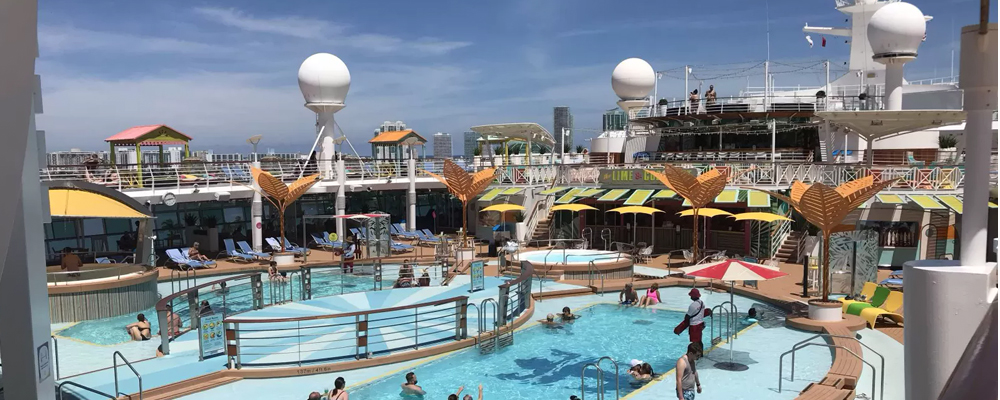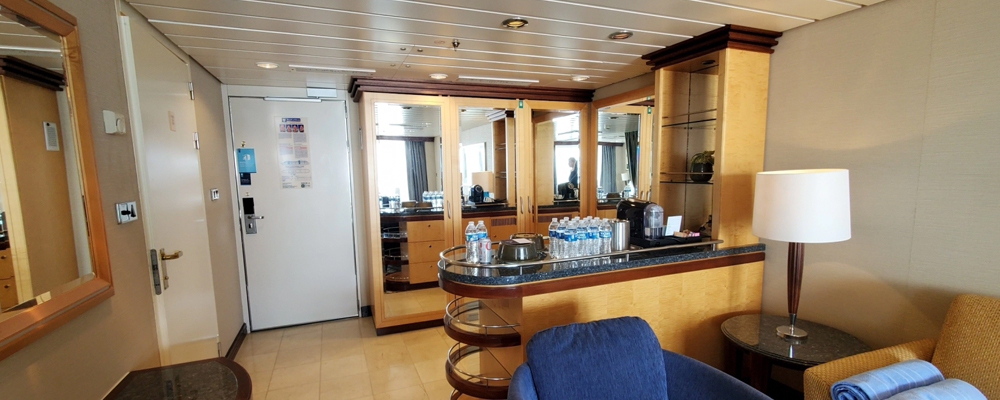GM Confidence: 3.5/5. I can’t justify giving it a 4; it was a little too unpolished. But ultimately, it did what I wanted, ending the run on a properly dramatic note, despite the rough edges.
The Promenade
I had a really hard time deciding what to do with this session. Apart from a properly dramatic “escalation,” there were two problems I was attempting to solve, which contradicted each other: I wanted to do the fight in the Promenade, specifically to give an opportunity to get a few achievements (as the players correctly guessed) that they wouldn’t have had otherwise; and I wanted to do something in the engine area because there hadn’t been enough close-quarters fighting for a group primarily designed as close-quarters fighters. Ultimately (as evidenced) I decided to do both. The Promenade fight was supposed to be a quickie, but I know how these things go well enough to make plans to abbreviate the second part if needed. I didn’t want to do any sort of quick-time scene for the approach; I just wanted to get right to it. I decided to go in media res to skip over the inevitable “what do you do next?” fiddling about, and having to funnel them toward the right location—simplify; put them straight where they need to be, and point them at the objective. This is one of those situations where removing the players’ agency is often welcomed—they don’t enjoy waffling about any more than you.

It went more-or-less as expected. I expected Mayhem to stay back and provide cover—and potentially kill everyone before the other PCs could reach the fight zone (the reason for the second group, and their delay). I expected someone to attempt some kind of shortcut to Deck 5, though we dithered over the details longer than we should have—and dithering of this sort is usually the result of too many and/or unclear choices; I could’ve “funneled” them in a useful direction. (Afterward, it occurred to me that if Ness had followed Shredder to Deck 4 and the casino stairs, she would have been in the fight sooner.) I expected they would use the car—I was pleased I didn’t need to nudge them in that direction at all.
I meant to have “Shoe” encounter Mayhem on the rifle, and end up helping cover for him—completely forgot. The “clear/not-clear” mechanic I came up with didn’t even get used. I did not expect them to take the second group down so quickly; the security team was supposed to actually help. We would’ve benefited from a few more images of the shop-fronts, to better communicate that geography—once again, I didn’t think through the issues with the map.
Down Below

When we finally got to the bowels of the ship, there was enough time to do a fight, but not on the scale I felt it deserved. I had a nagging negative feeling about the way the “sentry takedown” situation was unfolding that I didn’t fully understand at the time. After the game (of course) I realized what it was: Just hanging some bad guys out to get ganked from the shadows, ultimately, feels a bit “unearned”—just a die-roll to surprise them, and an easy, undefended kill.
This segment needed some kind of quick-time mechanic, and a (usable) map—you know, like a GM normally does. Then they’d have to figure out how to approach unseen. There should have been some consequence for failure to sneak up (which did not occur), or taking too long to dispose of the sentry (which did occur), but I didn’t manage to come up with anything at the last minute. It took long enough to get through the sentries that I couldn’t justify throwing in a proper fight with the mini-boss, and that’s a shame. The coordinated death-from-above was “cinematic,” but a bit…unsatisfying. And once again, I find myself questioning the right way of handling the situation where the bad guy(s) is basically defeated, but not 100% “down” yet—continuing to play it out is tedious and pointless, but just saying “it’s over” feels lame, too.
I was starting to suffer from a bit of brain-lock toward the end, which I would later conclude to be the combination of a lack of preparation and performance pressure eating up the available mental bandwidth. Preparation gives your brain the capacity it needs to deal with new, unexpected issues—like someone suddenly deciding to use a garrote when you haven’t read up on it in over a month 😛
The End?
After the fight was over, all that remained was really just a narrative wrap-up; not much for the PCs to actually do at that point. Another after-the-game realization was that I should have made Dalavi, somehow, be physically unavailable. Then he’d have to talk the PCs through the bomb-defusing process—making them roll for it, and feeling the tension of potential failure. I felt good enough about the results, but honestly, I was just glad the run was finally over, so I could relax.
I’ll speak to what comes next, and (potentially) when, in the campaign wrap-up review post to follow.








